11 Essential ACL Rehab Exercises: Early Stretch and Strengthen after ACL Reconstruction
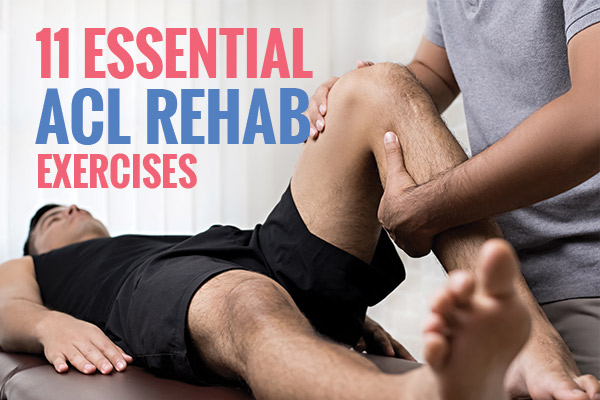 The most commonly injured ligament in the knee that undergoes surgical repair is the anterior cruciate ligament (ACL). We see numerous people throughout the year who walk gingerly into the clinic with a referral from their surgeon to start their rehab journey after an ACL reconstruction. This article will outline the importance of early-stage ACL rehab, and the role that stretching and strengthening plays in ACL rehab.
The most commonly injured ligament in the knee that undergoes surgical repair is the anterior cruciate ligament (ACL). We see numerous people throughout the year who walk gingerly into the clinic with a referral from their surgeon to start their rehab journey after an ACL reconstruction. This article will outline the importance of early-stage ACL rehab, and the role that stretching and strengthening plays in ACL rehab.
What does the ACL do?
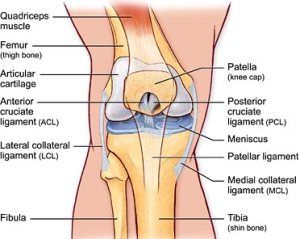
The ACL is a ligament – a body structure made of strong fibrous material that works to control excessive motion by being a limit to the mobility of a joint. It is located within the knee joint capsule.
ACL injury is often seen in all football codes, skiing, basketball, netball and any other sport involving change in direction running.
The ACL is the main restriction to forward motion of the tibia or shin bone. It stops the tibia sliding too far forward – or when the foot is planted, the femur sliding back. The ACL also contributes to stabilising the amount of angulation and rotation at the knee joint. It is called a cruciate as anatomically it crosses with another ligament in the knee – the posterior cruciate ligament.
There are a few people out there rupturing their ACLs – in professional sports some studies have seen an annual incidence rate of 0.15-3.7% (Moses 2012 Res Sports Medicine). Ruptures of the ACL are seen more frequently in professional sports then amateur sports. It is commonly injured when the athlete rapidly decelerates, followed by a sharp or sudden change in direction (cutting).
Goal of early ACL rehab:
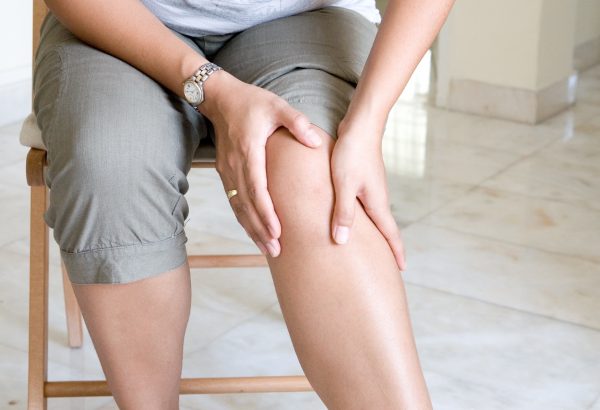
Early rehabilitation post ACL reconstruction is generally defined as the first two weeks after the surgery. It is important in these first two weeks to meet some goals, which generally are:
• Minimising the pain and swelling post-operatively
• Have a relatively normal walking pattern
• Getting full extension in the knee (really straight!)
• Have around 120d of knee flexion (knee bend)
• Start to gain some good quadriceps (front thigh muscles) and hamstring (back thigh muscles) control
• Working towards having some single leg control
Keep in mind these goals are for a ‘straight-forward’ ACL repair – there may be different restrictions put in place if the knee has undergone other procedures such as a meniscal repair concurrently.
Minimising pain and swelling:
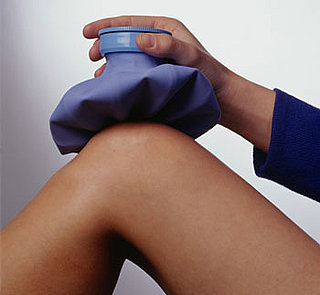
Post-operatively the knee will be sore and swollen. To aid in rehab, regular pain relief is essential to allow the body to let the knee move – generally speaking, pain is a protective mechanism, and the body (and mind) will only work with so much pain; getting this under control is essential to allow early rehab and allow for faster and better outcomes at the other end of the journey.
Crutches help to get around while the knee is sore and muscles are yet to fire efficiently. Using crutches correctly can aid in normalising your walking pattern, which in the end will help get you off the crutches faster.
Regular ice and compression is also beneficial – icing 2 hourly to start with, and wearing compression bandaging/bracing to help get the post-operative swelling under control. Read about the RICE method
Manual therapy from a physiotherapist is highly beneficial in the early stages of rehab. Massage work of the leg can also aid in pain relief and help with lymphatic drainage to get the swelling under control. Hands-on patella mobilisation and knee mobilisation techniques aid in restoring knee mobility, and can also have a pain-relieving effect.
ACL Rehab: Gain early full extension:
One of the main aims of early rehabilitation is to gain full extension of the knee as quickly as possible post-operatively. Not gaining full extension now can have drastic implications later on in the rehab process. This is where stretching is really important.
I tend not to stretch the hamstrings too vigorously early as most ACL grafts are taken from strands of hamstring tendon of the same leg – this needs some healing time too.
Stretches that are beneficial for ACL rehab include:
Long sitting calf stretch:
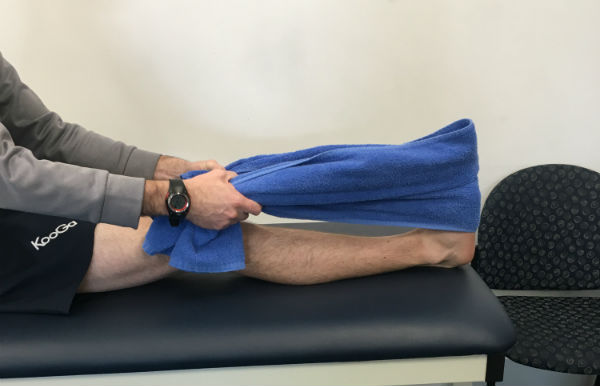
In long sitting wrap a towel around your forefoot with your leg as straight as possible. Pull the towel towards you so you can feel a stretch through the back of your lower leg. Aim for at least 20sec holds.
Popliteal stretch:
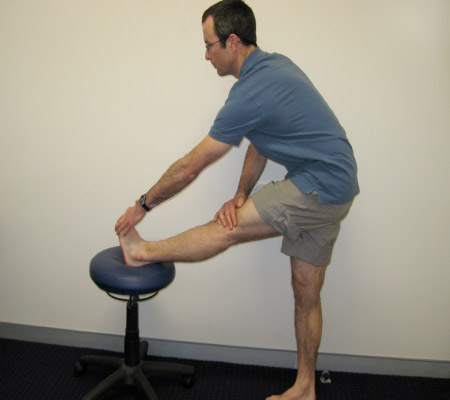
Stand in front of a chair. With your standing leg point your toes inwards. Keeping your other leg straight, place your heel on the chair and pull your toes back towards you. Reach the outside of your foot with the same sided hand as the leg you are stretching. Pull your foot to the outside. Place your other hand on the knee of the leg you are stretching and push downwards. Repetitions: 4 x 20 seconds Frequency: 3-4 times per day
Standing calf stretch:
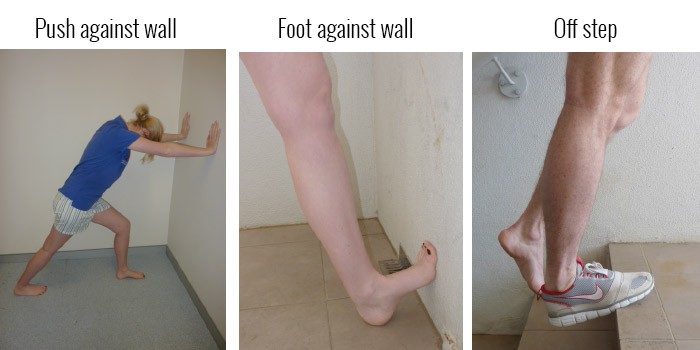
It is also important when resting with the leg up to try not have anything under the knee – try to have the knee straight as often as possible when resting up.
Gradual gain of flexion for ACL rehab
Remember to protect potential other repaired structures. Flexion stretching exercises can hurt, but don’t need to be pushed as hard as when trying to gain full extension in the first two weeks post-operatively. It is important to note that if the surgeon has also repaired a meniscus, the knees range of motion should generally be limited from full extension to 90 degrees flexion for the first 6 weeks.
Two basic flexion stretches include:
Knee slides:
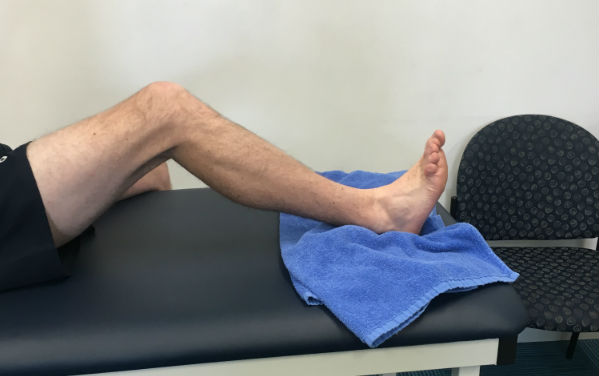
In sitting, have your heel on a slippery surface (ie tiles) with a smooth towel or similar under your heel. Pull your back towards you, so you bend your knee. Aim for 20-30 reps.
Knee flexion range of motion in prone:
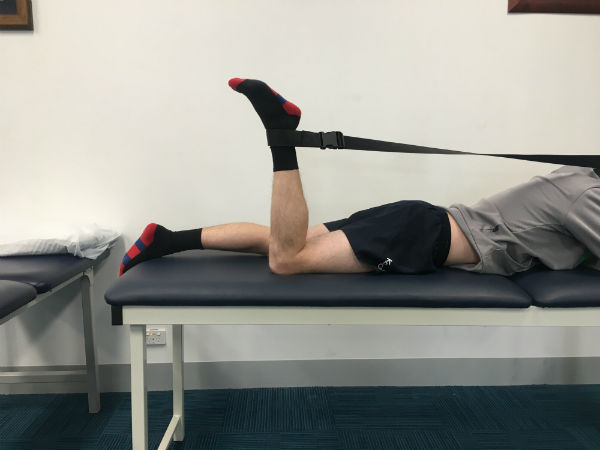
Lying on your tummy, wrap a long belt or rope around your ankle and hold the other end above your head. Pull the belt up to bend your knee. Aim to do this for around 5 mins, with 30sec intervals of pulling the belt.
Early strengthening for ACL rehab:
Gentle contraction exercises are important in the first 2 weeks to get back adequate muscle firing patterns. Initially it is important to get the hamstrings and quadriceps co-contracting – or firing together.
Knee co-contractions:
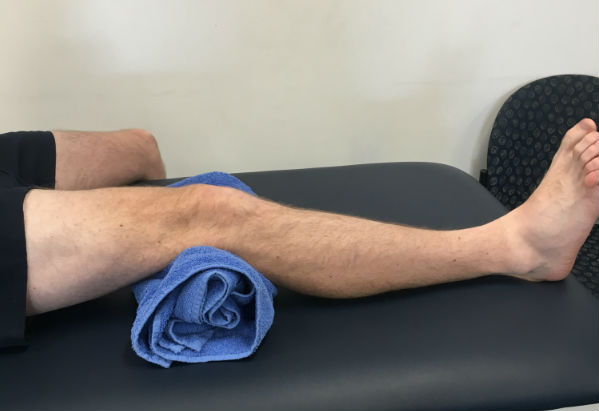
In long sitting, have a rolled towel or pillow under your knee. Push your heel into the floor to contract your hamstrings, and while holding this push the back of your knee into the towel to contract your quads. Hold for 10secs. Aim for 10 reps.
It is important to work the muscles around the knee in weight-bearing as soon as pain and swelling is minimised. When the knee has basic co-contraction control this can start with using a theraband around the knee that is attached to a table leg, and straightening the knee against the resistance of the band.
Boogie against band:
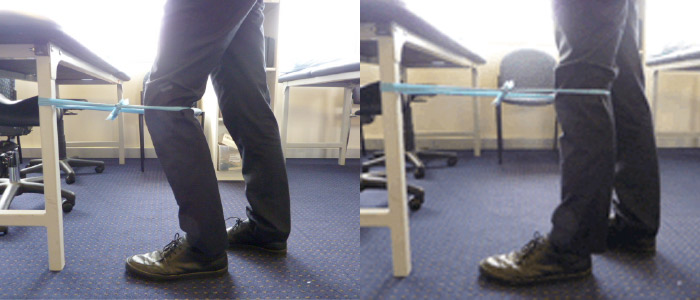
Stand with an exercise band tied around a pole and around the back of your knee. Take a step back so the band is on stretch Movement: Gently bend your knee, then slowly straighten it out against the resistance of the band. Hold for 3 seconds, release, then repeat.
Gentle squats can start once the boogie against band is mastered (hopefully within 2 days). A swiss ball is beneficial and aids in gaining good squat technique:
Double leg squat:
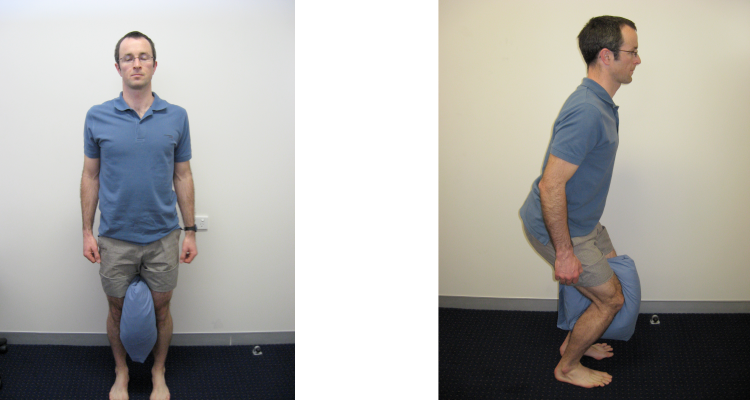
Stand with your feet hip width apart and your toes facing forwards. Place a pillow between your knees and squeeze thigh muscles. Squat down by bending from your hips and pushing your buttocks backwards. Keep your back flat and squeeze the pillow with your knees. Keep your thigh muscles tight throughout the movement.
It is important to try move towards single leg work once the double leg squat is comfortable and well controlled.
Single leg quarter squat:
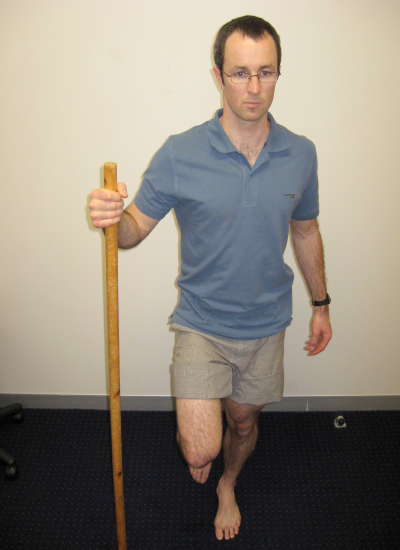
Stand with one knee bent up and hold onto a stick in this hand. Straighten your standing leg and tighten the muscles in your thigh. Keeping your thigh muscles tight, slowly (1-2 seconds) bend your knee ¼ of the way down ensuring that your knee stays in line with your 3rd toe. Then slowly (1-2 seconds) straighten back up maintaining the contraction of your thigh muscles.
It is also important during the first two weeks post-operatively to maintain hip control. Glut muscles are important in controlling the leg, so keeping these active are important. Two easy glut exercises are:
The clam:
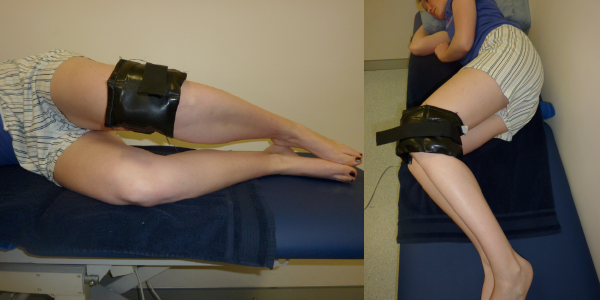
Lying on your side, flex your hips towards your chest and bend your knees to 90 degrees. Movement: Keeping your back and pelvis still and ankles together, lift your knee up as high as possible. Hold for 3 seconds, then lower. For more advanced – put a weight over the top of your top knee
Important to complete when the knee is still sore and swollen and not tolerating too much weight through it.
Standing clam:
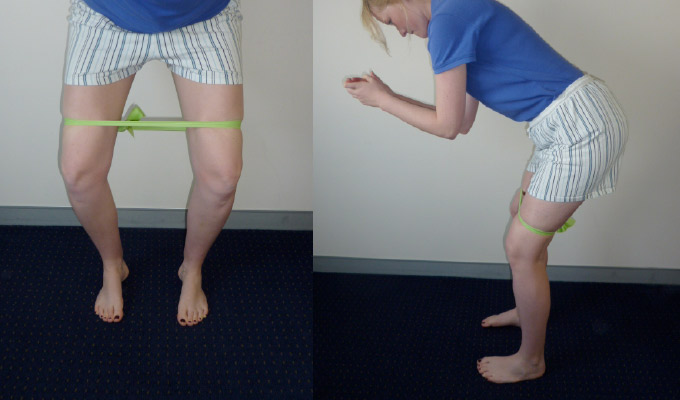
Starting Position: Stand with feet shoulder width apart and exercise band looped just above both knees. Bend slightly at the knees and bend forward at the hips keeping your back straight. Movement: Slowly turn your knees outwards as far as you can go and then back in again only a small amount. Repeat until fatigue.
Can get the gluts (external rotators of the hip) firing with legs weight-bearing.
Overall:
The first two weeks post-operatively after an ACL reconstruction tend to set a precedent for the rest of the rehab journey. Work hard in reaching the initial goals in the first two weeks, and it will be easier to continue setting and reaching further rehab goals in the future months for your ACL rehab. Stretch, strengthen, and enjoy!
References:
Article: Moses 2012 Res Sports Medicine
Course content: Sports Physiotherapy Australia – Tim McGrath’s Advanced Knee Diagnosis and Rehabilitation 2017.